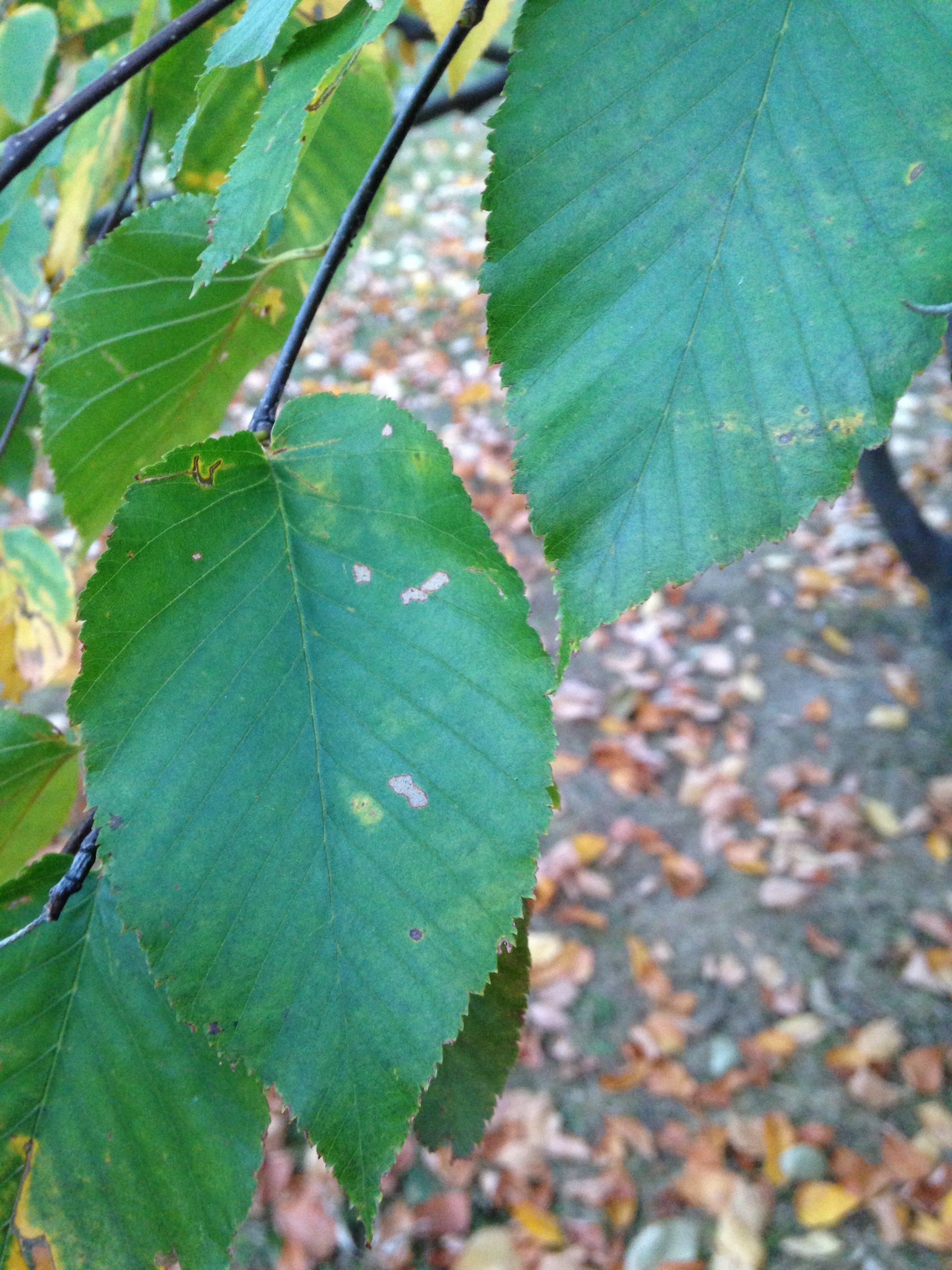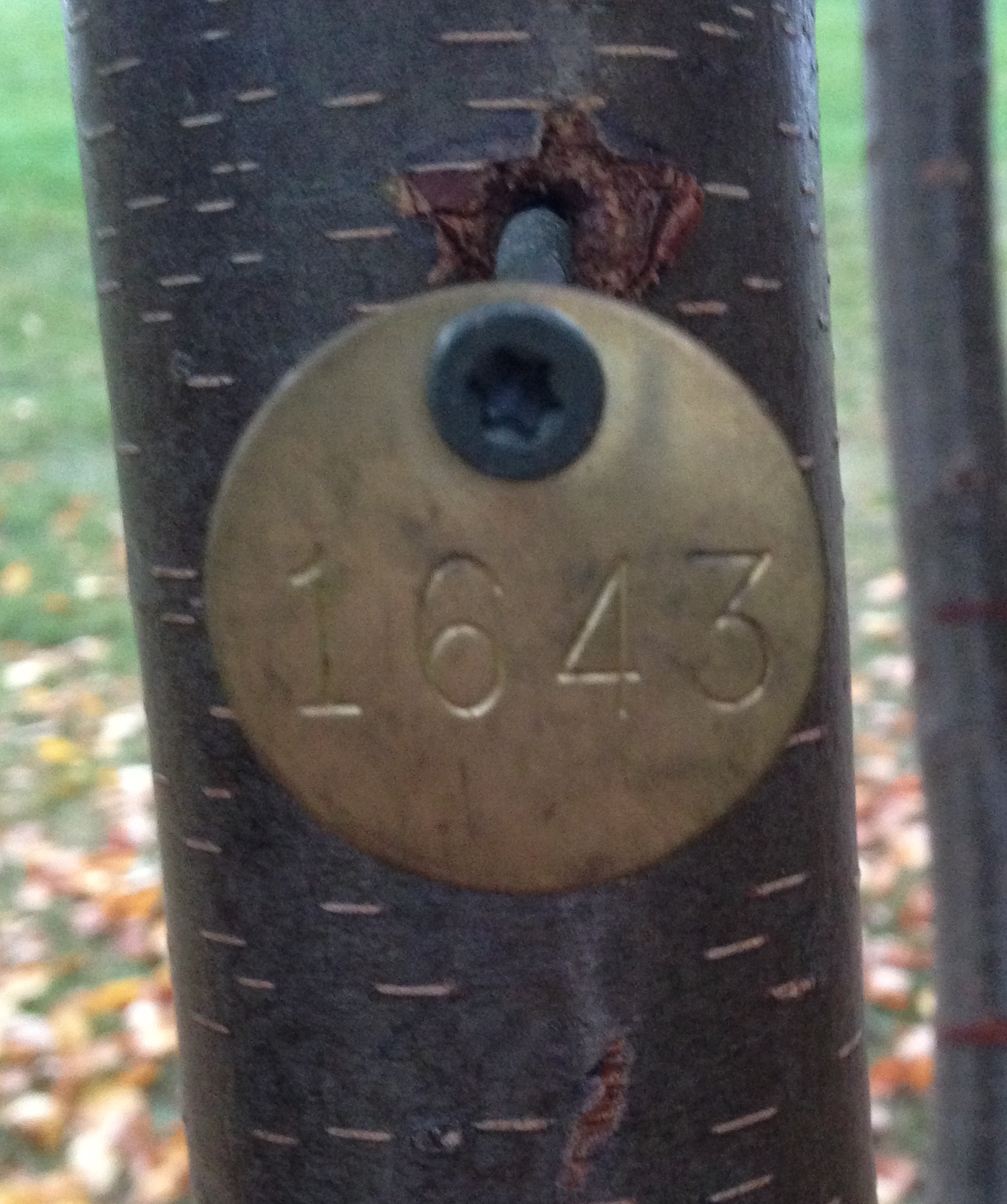Black Birch (Betula lenta) : Identifying and Locating the Black Birch

The leaves of the young Black Birch tree on UVM's campus. Note that the leaves are alternate, simple, and ovate in shape with a serrated, double-toothed edge. (Lewis-Slammon, 2014).
The Black Birch is a thin and dark pillar in the wilderness. In such a forest setting, the tree will grow straight with an absence of lower branches, creating this pillar-like exterior. The Black Birch spreads it branches to the sky, on average reaching about 60 feet in height, although it can reach as much as 80 feet or more. The tree is most often narrow. On average, it will be only 2-3 feet in diameter. Its twigs (which can be made into a tea) are reddish-brown, slender, and covered in pores.
The Black Birch is a deciduous tree, meaning it loses its leaves seasonally, like many other northern species. The leaves are alternate, simple, and ovate in shape with a serrated, double-toothed edge. Being of a rather small size, they range from about 3 to 5 inches in length. The leaf stems have little hairlike structures along them. In the fall, the leaves exhibit a continuum of golden yellow and light green colors adding variation to the decaying landscape before the endless expanses of winter. Most years, the tree blooms between April and May. Its buds are ovate with pointed tips. As you move from the base of the bud to its point you witness a horizontal striped effect of light green and brown. The Black Birch grows its leaves early in Spring, once again unleashing its vibrant greenery to the world.
In a variation from most birches, the Black Birch's bark is not at all papery, but smooth. Uniquely, the Black Birch's bark matures over time. When the tree is young, the bark is a dark reddish-brown and extremely smooth. As the tree reaches maturity, the bark is more commonly described as ashen, or a blackish-brown color with scaly, irregular plates forming horizontally.
The tree is monoecious which means it has both male and female flowers on the same tree. The flowers of the black birch are elongated strands that hang down from the branches in small clusters. The male catkins/flowers, which are present during the Winter, grow to be 3/4-1 inch and are a green color. Alternately, the female catkins/flowers grow to be 1/2-3/4 inch and are a red-tinged green color. The seeds in these female cones mature in the Fall and drop to the ground in the Winter. The fruit of the Black Birch consists of scaly brown cones that grow to be 1-1.5 inches long with very small 2 winged nutlets.

The identifying tag on the Black Birch at UVM. This tag number can be inputed to the UVM tree inventory to determine the exact location of this specific tree and any other Black Birches at UVM. (Lewis-Slammon, 2014).
The Black Birch prefers rich, mountain woods. Its ideal environment includes well-drained, slightly acidic, and moist soil and North or East facing slopes. That said, it will still grow on rockier and drier areas. Its native range spans from Southern Maine to Northern Georgia. The tree grows best in South Appalachians. Due to climate change, the territory may increase northward in coming times.
